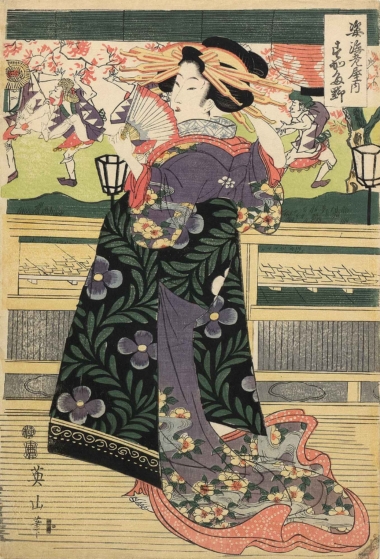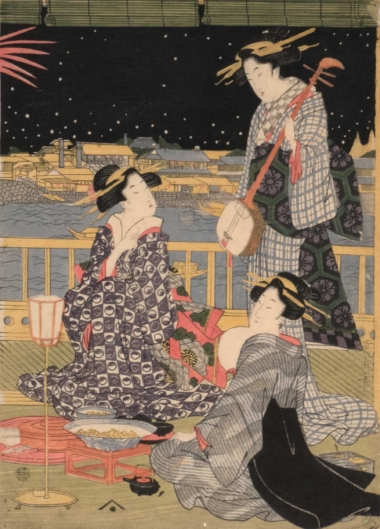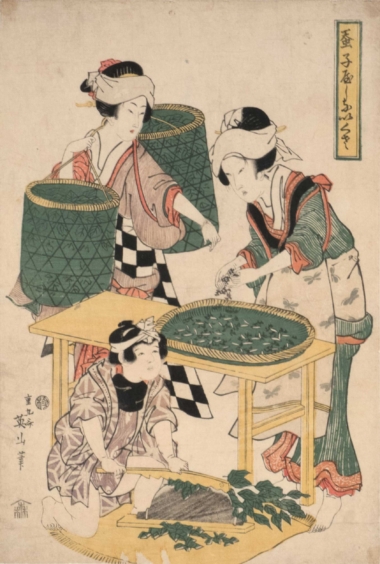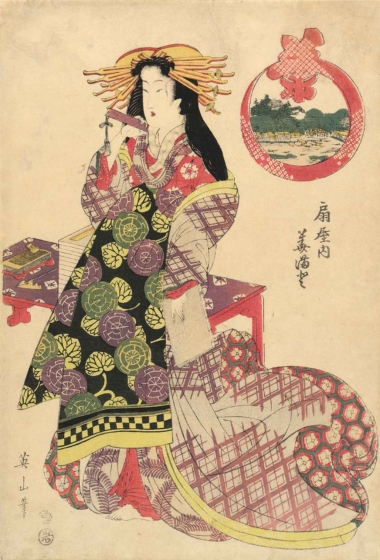

Kikugawa EIZAN (1787–1867) learned painting in his father’s workshop (painter). After Utamaro, Eizan and Toyokuni are among the leading actors in beautiful women ( bijin-ga ). Strongly influenced by the great master Kitagawa Utamaro (around 1753 / 54–1806), he soon devoted himself to the representation of beauties and developed his own distinctive style of standing elegant women in a quiet atmosphere. Eizan made numerous woodcuts. His works are among the most outstanding followers of Utamaro’s art. From 1830 he devoted himself exclusively to painting.
Kikugawa EIZAN (1787–1867) learned painting in his father’s workshop (painter). After Utamaro, Eizan and Toyokuni are among the leading actors in beautiful women ( bijin-ga ). Strongly influenced by the great master Kitagawa Utamaro (around 1753 / 54–1806), he soon devoted himself to the representation of beauties and developed his own distinctive style of standing elegant women in a quiet atmosphere. Eizan made numerous woodcuts. His works are among the most outstanding followers of Utamaro’s art. From 1830 he devoted himself exclusively to painting.





Recent Comments